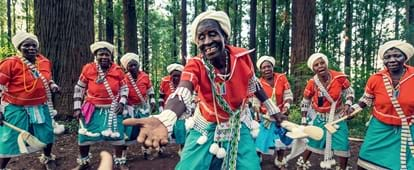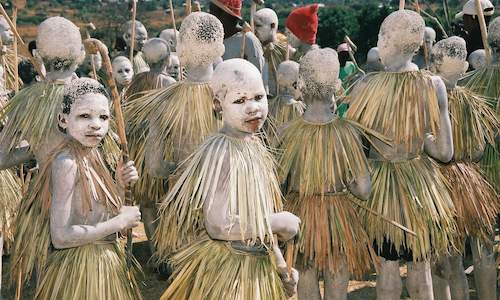The Best Guide To South African Culture Today
Table of Contents7 Simple Techniques For South African Culture TodaySouth African Culture Today Fundamentals ExplainedThe Only Guide for South African Culture TodayThe Main Principles Of South African Culture Today Some Ideas on South African Culture Today You Should KnowThe 5-Minute Rule for South African Culture Today
An issue of significance in Zambian villages is the passing away of enjoyed ones. All participants of the village placed cash, time and effort with each other for the funeral of the deceased.Throughout the mourning period; males remain outside the house and the females stay inside your house of the deceased. After speaking regarding the dead, the village walks to the place of funeral to say their last bye-byes. Music and dance is a really essential facet of the Zambian culture. The numerous tribal devices have their very own dancing types; nevertheless, makishi is common among all tribes.
All About South African Culture Today
When it comes to music, drums are used the most, with a variety of drumming ceremonies. In Zambia, majority of individuals are Christian; Protestant and Roman Catholic. There are little groups of Muslims and Hindus, with the remainder following local native tribal beliefs.

South African heritage and society is exceptionally varied, and contains various groups of individuals who each have their own customs and ideas. Having such a variety of people and cultures is what makes South Africa so unique. In the real sense of the phrase, we are a rainbow country.
Making it the 7th on the checklist of countries with the most Portuguese people in it outside of Portugal. Portuguese is not just a culture, but it is likewise a language and a race. Portuguese individuals originate from the nation of Portugal in Europe, however, due to Portugal (like numerous other countries in Europe) exploring the globe and conquering various other nations during the 15th 20th centuries, South Africa has what we call Portuguese South African's living in it.
The Best Guide To South African Culture Today
Among the prominent functions of the topography is a plateau that covers virtually two thirds of the center of the nation. The plateau facility climbs towards the southeast, where it culminates in the Drakensberg range, component of an escarpment that separates the plateau from the seaside locations. The Drakensburg consists of Sparkling wine Castle, the highest possible height in the nation.
The area north of the Witwatersrand, called the bushveld, inclines downward from eastern to west towards the Limpopo River, which forms the international boundary. The western area of the plateau, the middleveld, also comes down in the direction of the west and differs in elevation in between the highveld and bushveld. In between the Drakensburg and the eastern and southern coastline, the land descends to the sea.
Nearer the coast there is a low-lying level called the eastern lowveld. Southwest of the plateau the country ends up being considerably extra dry, paving the way to the stony desert of the Great Karroo, surrounded on the eastern by the reduced, much better watered plateau of the Little Karroo. Dividing the dry southerly interior from the sandy littoral of the southerly coast and West Cape is one more range, the Langeberg.
The Buzz on South African Culture Today
The nation's racially, ethnically, and politically separated history has right here actually generated national and subnational icons that still work as signs of the country, and others symbols that are approved only by particular groups. The monuments to white settler conquest and political dominance, such as the Afrikaner Voortrekker ("pioneer") Monument in Pretoria and the Rhodes Monolith honoring the British colonial empire building contractor and Cape head of state Cecil Rhodes, continue to be sectarian symbols.
The initial modern-day residents were the San ("bushman") hunter-gatherers and the Khoi ("Hottentot") peoples, who herded animals (South African culture today). The San may have been present for countless years and left proof of their existence in thousands of ancient cavern paintings ("rock art"). Bantu-speaking clans that were the ancestors of the Nguni (today's amaZulu, amaXhosa, amaSwazi, and vaTsonga peoples) and Tswana-Sotho language groups (today's Batswana and Southern and Northern Basotho) moved below eastern Africa as very early as the fifteenth century

Both former republics of the Orange Free State and Transvaal (South African Republic) were developed by Afrikaner inhabitants who defeated and dispossessed the Basotho and Batswana. Lesotho would have been by force included right into the Orange Free State without the expansion of British defense in 1869. The ultimate marriage of the country resulted from the South African War (18991902) in between the British and the 2 Afrikaner republics, which lowered the nation to destroy at the start of the twentieth century.
Afrikaners traditionally considered themselves the just true South Africans and, while approving full citizenship to all locals of European descent, rejected that standing to individuals of shade up until the democratic change of 1994. British South Africans retain a sense of social and social connection to Great Britain without compromising their identity as South Africans.
Our South African Culture Today Ideas
The variety and fragmentation within ethnic collections and the balance of stress in between those groups during the twentieth century prevented interethnic civil problem. While intergroup stress over resources, entitlements, and political prominence continue to be, those disputes are as likely check my reference to match Zulu against Zulu as Zulu against Xhosa or African versus Afrikaner.
From colonial India, British sellers and administrators brought the curved steel decorative roofings and slim shoelace job pillars that still epitomize the terraces of homes arounds and cities throughout the nation. Holy places add an essential building facet even in the smallest towns. Along with the rising steeples and traditional stonework of Afrikaans Dutch Reformed churches, Anglican churches, synagogues, mosques, and Hindu temples give selection to the religious building scene.

Butchering and the brewing of typical grain beer are important in securing the engagement and a good reputation of the ancestors who are considered the guardians of good luck, success, and well-being. Indian communities keep their native culinary customs and apply them on Islamic and Hindu ritual and ceremonial events. Afrikaners and Coloured individuals gather at weekend breaks and unique events at multifamily bbqs called braais, where area bonds are strengthened.
Because this was the key economic venture of both black Africans and white homesteaders, conflict in between those groups focused on the property of grazing land and animals. In 1867, the biggest diamond deposits in the world were discovered at Kimberley in the west central location. The wide range from those areas aided finance the exploitation of the best gold reef worldwide, which was uncovered on the Witwatersrand in 1886.
9 Easy Facts About South African Culture Today Described
This resulted in misunderstandings and purposeful misrepresentation in the transactions of white settlers and government authorities with African chiefs during the colonial duration (South African culture today). In the establishment of African books, some facets of public and mainly "tribal count on" land period were protected, and even in white country areas, types of communal period were still exercised in locations with African neighborhoods
After the democratic makeover of 1994, programs for land restitution, redistribution, and reform were Read Full Article set up, yet development has actually been slow-moving. The white minority still controls eighty percent of the land. Following agricultural land intrusions in Zimbabwe, the Division of Land Affairs has actually pledged to speed up land redistribution.